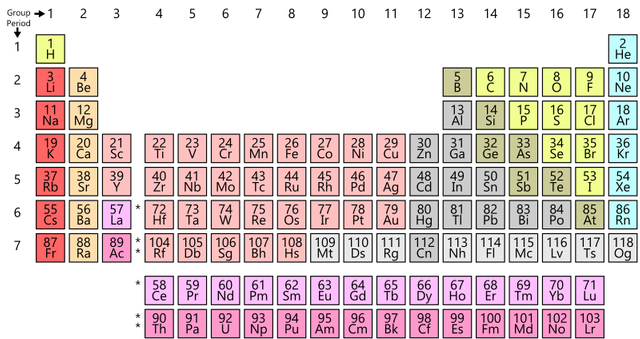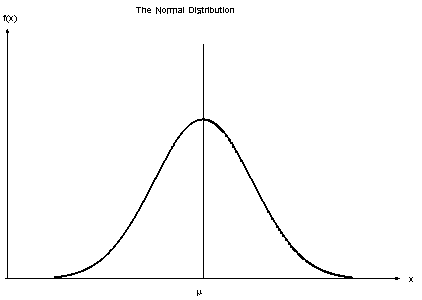Structures of the Universe
The universe is a mind-boggling place, yet it has patterns that reveal its true nature.
These patterns carry weight that is not appreciated in current models, leaving us to wonder at the apparent illogical, inexplicable nature of reality. If we follow the patterns, though, the mysteries of the Universe reveal themselves.
If we strip away the complexities of what we think we know, and peel back the layers to reveal the foundational underbelly, what we can say with certainty is much less descriptive than what we claim to be able to say with certainty.
For example, what we call "atoms" have extensive descriptions that elaborately attempt to explain a full range of details about these observed components of the universe. From the nuclei constituents to the "charge" of its particles, everything we claim to know of the particulars of these structures is built on sweeping, universally applicable approximations.
Even the very claim that there are hydrogen atoms, or helium atoms, or lithium atoms is built on assumptions; assumptions that these systems--which share apparent similarities so great that we cannot distinguish their differences--actually are identical.
In truth, what we can say with certainty about these systems is much less and far more generic.
Atoms
Regarding "atoms", we can say:
- They have a central mass portion. Any further details are too descriptive and either carry assumptions with them or easily lead into subsequent assumptions. To even call it a "nucleus" leads to a wide array of additional details about "nuclei" that are built on inference and assumptions.
- They have an orbiting mass portion. To even call them "electrons" instills an unconscious assumption of supposed "charge" properties to the particles. Just because something behaves a certain way in a certain environment does not mean that that behavior is an intrinsic characteristic of the system.
That's it. These systems are so difficult to observe that we cannot reliably claim to know with certainty anything else about their characteristics from studying exclusively atoms. Everything else we "know" about atoms is conjecture.
You might be saying, "that's ridiculous; what about ...".
For example, we can clearly see that "atoms" have specific masses where they exist and no where else. Certainly, we can say that groups of identical atoms exist at distinct weights that we can label with names, right? However, this only means that there is a trend where "atoms" tend to exist. If we exclude variation from an exact trend, we inadvertently assume that the trend is an absolute. Rather, this trend suggests that there are stability points where systems find balance that they tend to be in or near. These function by the same underlying universal principles of the cosmos through which Resonance Experiments with Sand occur, where stability exists in a certain state between increasing degrees of energy until a point of instability where rapid change occurs and a new state of stability is achieved.
Notably; atoms are small. At least from our perspective. And so, we do not experiment and deduce details about these systems individually, but rather through measurements of many systems simultaneously. Read about the process in, "How Do You Weigh an Atom?". The result is alike to approximating a Gaussian Curve as a line.
One is what is, the other is an approximation. This approximated line, then, is said to be real when we then claim that "hydrogen" or "helium" or any other group of identical systems exist. All we can really say is that there are trends of balance and stability where systems tend towards. We cannot say that identical systems exist.
"What about protons and neutrons?!"
Much the same, claiming that such groups of identical systems even exist in the first place is the result of interpreting observed trends as absolutes.
For more on this topic, see The Electron and Proton in the Infinite Universe.
Rather than attempting to force understanding by focusing study on "atoms", it is necessary to step away from these systems with the very generic perspective above and look to others.
Planetary systems
Moving upward in apparent classes of systems we can see, beyond "atoms" come "planets." Notably, immediately we see that in larger objects there is no apparent identicalness. This confirms that individual "atoms" are also not identical to one another. Using the same process of removing all descriptions beyond the most generic descriptions of these systems, we can say:
- They have a central mass portion (the planet), and
- They have an orbiting mass portion (observed as moons, planetary rings, and "electron belts" such as the Inner and Outer Van Allen belts).
These generic features seem to repeat themselves. This repetition of features across a wide array of systems is recognizably a pattern.
Solar Systems
With solar systems, the same pattern emerges:
- They have a central mass portion (the star), and
- They have an orbiting mass portion (planets as well as belt systems such as the Asteroid and Kuiper Belts of our solar system).
Galaxies
With Galaxies, again the same pattern emerges:
- They have a central mass portion (the "supermassive black hole"), and
- They have an orbiting mass portion (the "disc" of the galaxy).
Now, with galaxies, due to their high mass and slow functionality from our perspective, additional features can be distinguished. For example:
- Galaxies can have "spiral arm" structures.
Notably, not all galaxies have this structure. And so, to consider the cause we can look to another system for explanation. In this case, the sun's rotation causes its electromagnetic field to rotate and this leads to what is known as the heliospheric current sheet.
Therefore, due to each unique and distinct system operating by the same underlying principles of the cosmos, so, too, does the creation of the spiral arm structure in a galaxy occur by the rotation of its central mass (in a galaxy's case, it's central "supermassive black hole").
In this simple example, we can see how limiting our description of what is actually known as conservatively as possible produces the outcome of an interpretation that we can hold firmly to be accurate: that spiral arms of galactic structures form due to the rotation of the central mass object. This is not current theory. For more information about a commonly accepted interpretation, see Why Are Some Galaxies Shaped Like Spirals?.
"Astronomers believe that galaxies have spiral arms because galaxies rotate – or spin around a central axis – and because of something called 'density waves'."
While a nuance, there is no recognition of the actual rotation of the central object itself. This drastically limits our ability to understand the underlying fundamental causes of these observed interactions.
"Atoms", "Planets", "Stars", and "Galaxies"
All of these systems appear different. "Atoms are not planets are not stars are not galaxies." As a result, we differentiate between each and, just the same as with the supposed "Elements of the Periodic Table"--where each variation in steady-state produces a wide array of apparent elements when groups of similar systems are interpreted as identical--so, too, do the large-scale variations in steady-states produce an apparent classification and categorization between observed systems as belonging to a particular "labeled group"--"atoms", "planets", "stars", and "galaxies".
This leads to interpreting each system separate from the others. "Atoms" are "atoms" and are analyzed as "atoms", without consideration for the functionality of "planets", "solar systems", or "galaxies". The analysis becomes so "microscopic", boxed in and approximated, that it no longer represents reality and is but a faint shadow of what exists.
If galaxies and solar systems have a moving electromagnetic field that causes disturbances to their surrounding orbiting mass, what does this tell us about rotating "planets" and "atoms"? Through cautious pattern inference, concrete conclusions can be made about systems other than those directly observed with confidence. This can be done by repetitively considering observations in each "classification" of particles and inferring what it tells us about the functionality of other systems. As a result of "ironing out the details", what we can say with certainty is able to become much more descriptive and absolute than what we were claiming to be able to say with certainty.
Truth only reveals itself when each system is seen to be unique, different, and distinct; and yet to function by the same underlying principles as all other systems.
Read more in The Universe is Fractal!
Conclusion
If you enjoyed this article, check out my other posts here on Steemit as well as my research paper and book at Cascading Universe.
Comments and criticisms welcome.
Thanks for reading!
-Steve Scully




Really good post! Thanks. You might have heard of quantum emergence theory? Really worth checking out if you haven't. The actress in the docs. is cute, too, and that never hurts.
And yes, I'm a spiritualist but an extraordinarily unique one who frames his metaphysics as speculation. Gnosticism.
Thanks for reading and commenting!
I have heard of quantum emergence theory, though I can't say I'm especially familiar with all the nuances of it. Mainly, I looked into it before (as I just did again) and felt they were drawing really elaborate and "out there" conclusions. To me, the universe is simple and does not have some hidden elaborate network of projection upon projection of different dimensional crystalline structures to produce it.
Their interpretation is the result of their attempts to merge two approximations: quantum mechanics and relativity. Neither are actual descriptions of the underlying mechanics of reality, both are approximations. When two approximations are combined, they do not merge into a more certain picture. Rather, they become an exponentially more uncertain picture. There is no combination of the two perspectives on the universe that arrives at a more accurate description because both are approximations that only apply to a small range (regardless of what the range is--next to infinite, it is nothing) of observations and are known to not apply to observations at so-called "extremes". This is because they are the best-fits of common knowledge that we have, and allow us to create many technological advancements, yet they are still not fundamental descriptions of reality.
Also, they claim non-determinism which is only really supported by quantum mechanics' claims of probabilistic functionality, which stem from misinterpreting groups of systems that function generally under a probabilistic nature when analyzed together as if they actually are probabilistic in nature. Nothing on the large scale is described to function this way; therefore, nothing on the small-scale functions this way. Probability only comes into play when many systems are analyzed together. It is a characteristic that is able to be quantified and observed and analyzed, but that does not mean it is an underlying principle of how the universe functions.
The article above is really the result of many other considerations. As you mention spirituality and metaphysics and gnosticism, you might find of interest that this model essentially states that the universe is the manifestation of infinity--having masses of an infinite range that interact with one another through gravitational forces alone, leading to the universe as we see it.
Another article I wrote on Steemit that I believe is very worth considering the details of is The Big Bang's Big Assumption. This goes into how gravity causes all distant redshifted galaxy observations as well as specifically how gravity causes electromagnetism. In so doing, it shows that the model arrives at an explanation for how one of the four supposed fundamental forces of nature is caused by another, thereby drastically reducing the complexity of the underlying model.
I'd also suggest checking out my book, The Simple Reality, with many of the same details and many others, which can be downloaded in pdf format here.
In other places, I have talked also about how gravity causes strong and weak interaction by comparing processes of atoms and stars (radioactive decay vs. supernova; nuclear fusion vs. supernova Type 1-A, for example) and demonstrating that the same mechanics occur (and that therefore they are the same processes). Thus, gravity--as a known cause of supernovae--can be said to be the only fundamental force of nature. In so doing, the universe is demonstrably all one thing. From this, it is a simple step to recognize what that one thing that everything is really is: The One, The All, The Infinite; God; a truth unavoidably interwoven throughout all of reality.
Thanks for your time and consideration of my writing!
Steve Scully
I'll get back to you on this but I agree with your initial point on approximations and untenable theories associated with them. I do applaud their research though as long as they frame it as speculative.
We may be at opposite poles in religious philosophy and that's okay. Religion and faith should also ALWAYS be framed within speculation otherwise the religious claim is dishonest. And dishonesty in religion is something we should all be concerned about.
I'm a dualist gnostic as I believe God (whatever it is if it exists) is separate and distinct from the material universe or at least the one we live in which was brought into existence via incongruity and resulted in a demiurge overlord. We are ruled by deceptive spiritual archons.
This is a complex field of inquiry and requires extraordinary amounts of objectivity...
Warning Will Robinson: not a topic for those easily triggered!
For now, I'd suggest viewing the Youtuber, Underlings, and look for his series on a case for an evil God.
Briefly, the universe will take everything and everyone you love away from you; every day the universe is actively trying to kill you in nearly unlimited ways and many of those ways are gruesome. This is no way consistent with a coherent loving God--something else is going on.
Fantastic article!
Thanks!